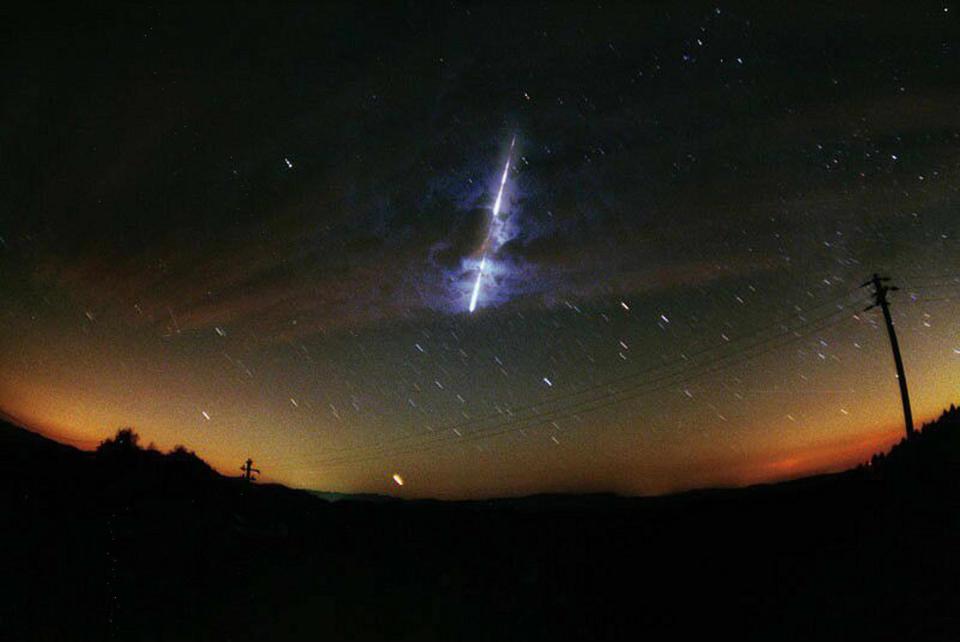A November meteor shower could be spectacular. Here's when to watch and where to look.
- Oops!Something went wrong.Please try again later.
Meteor lovers, your annual mid-November treat is on the way.
The peak of the Leonid meteor shower will shoot across the sky on the night of Nov. 17-18. The yearly spectacle occurs when the Earth passes through the debris field left behind by the comet 55P/Tempel-Tuttle.
This year, under a dark sky after the moon has set, you might see 10 to 15 meteors per hour, EarthSky said.
The Leonids appear to be coming from the constellation Leo the Lion (hence their name) in the east, but they should be visible all the way across the sky.
When is the Leonid meteor shower?

This year, the Leonids have been active since Nov. 3 and will stay active through Dec. 2.
But to view the peak of the shower, "watch late on the night of November 17 until dawn on November 18," EarthSky's Deborah Byrd said. "The morning of November 17 might be worthwhile, too."
What is the Leonid meteor shower?
The meteors are actually tiny pea- and sand-size bits of dust and debris crumbling off the Tempel-Tuttle comet as it swings by the Earth. (Earth’s orbit takes it straight through the debris trail.) The dust and debris ignite when they hit our atmosphere.
“As comets orbit the sun, they leave dust behind in their orbits,” said Theodore Kareta, a postdoctoral researcher at Lowell Observatory in Flagstaff, Arizona.
“Meteor showers occur when the Earth crosses one of these cometary dust trails and the dust burns up in our atmosphere. How much dust is in the trail, at what angle the Earth crosses it and what time of year this happens are all factors in where to look, when to look, and whether or not a meteor shower is really stunning or a real dud.”
Where are the Leonids visible?
“People should look towards the east from a dark sky location. Think national forests, state parks and other places far from big cities,” Kareta said.
“If you're trying to see meteors with your naked eyes, you've got to give your eyes time to adjust," he said. "Some meteors can be faint, so in addition to finding a dark place to stare at the night sky from, you should also give yourself 20-30 minutes to let your eyes get used to the low-light conditions.”
Fortunately for skywatchers, the Leonids are often bright meteors with a high percentage of persistent trains, according to the American Meteor Society.
Where can you watch the Leonid meteors in Iowa?
In Iowa, state parks are open from 4 a.m. to 10:30 p.m., according to Iowa DNR.
Walnut Woods State Park in West Des Moines, Big Creek State Park in Polk City and Ledges State Park in Madrid are a few spots away from city lights where you might be able to catch a glimpse.
What will weather in Iowa be like during the shower?
On Friday night, Nov. 17, skies in the Des Moines metro will be clear for viewing, according to the National Weather Service forecast. It may be a bit chilly, with a low around 30 and a slight wind.
On Nov. 18, skies are expected to be mostly clear in the evening with a high just above freezing, around 34 degrees.
Sunday, Nov. 19 it will be partly sunny during the day with a 20% chance of rain at night and mostly cloudy skies, affecting views of the meteor shower. The low will be around 41 degrees.
Leonids have produced meteor 'storms'
Some of the greatest meteor showers ever seen have been the Leonids. In some years, they've been a full-fledged meteor "storm." The 1833 Leonid meteor storm included rates as high as an incredible 100,000 meteors per hour, EarthSky said.
More recently, "rates were as high as thousands of meteors per minute during a 15-minute span on the morning of November 17, 1966," Byrd said. "That night, Leonid meteors did, briefly, fall like rain."
When is the next meteor shower?
There will be two more meteor showers in 2023:
Geminids: Nov. 19-Dec. 24, peaking Dec. 13-14.
Ursids: Dec. 13-24, peaking Dec. 21-22.
This article originally appeared on USA TODAY: Leonid meteor shower in 2023: When to watch, where to look in Iowa

